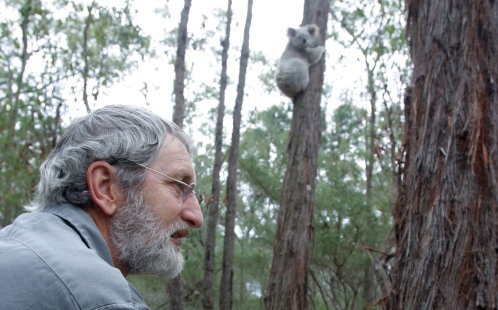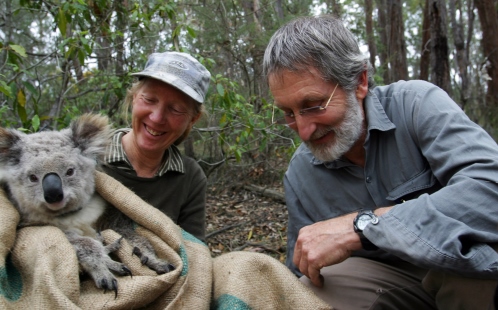Macarthur bushland is a koala oasis
You may be surprised to learn that Macarthur’s bushland is a koala sanctuary. For 23 years, Dr Robert Close, from the School of Science and Health, has been monitoring the numbers and quality of life of koalas residing in the Macarthur region and notes that they’re a lucky colony, as they’re chlamydia-free. This is extremely rare – in fact, in some parts of Australia 90 per cent of koalas are infected with this sexually transmitted disease, which can cause cystitis and its associated pain, blindness, infertility and even death.
“The Macarthur colony is the only chlamydia-free colony of koalas that I know of in New South Wales,” says Robert. “It’s likely they are chlamydia-free because the population has been isolated for a long time. However, chlamydiosis occurs in the Southern Highlands and the Kurrajong area near Windsor, so I fear it’s just a matter of time before it arrives.”
Apart from the koalas being at risk from climate change, fire, cars, dogs and falls, when Robert first arrived in Macarthur in 1987 there was a fierce debate taking place between conservationists and developers over the koalas, which were threatened by a 200-hectare development site at Wedderburn. While the conservationists were concerned that the supposedly small and disease-free colony of koalas would be compromised, they had minimal evidence to support their case.
As a mammalogist, Robert’s interest was immediately piqued, and he commenced his study in the biology of peri-urban koalas in the Macarthur bushland. Fortunately for the koalas, the developers went out of business and the area eventually became Dharawal National Park.
Robert’s research has found that the established female koalas of this colony have large home-ranges, are distributed widely, live for an average of 13 to 15 years and have a high rate of success when reproducing. His research, in collaboration with Associate Professor David Phalen from Sydney University, has also confirmed that there is a lack of chlamydiosis but recently discovered two animals with mange.
“Our population of koalas is low-density,” says Robert. “The only reason we found enough animals to make the study worthwhile is through the local residents who called the pager number. 10,000 pairs of eyes are much better than one or two!” As a result, Robert and his team were able to map more than 2000 public sightings, and place individually coloured and numbered ear tags on 170 koalas and radio collars on 30 koalas.
Thanks to the research conducted by Robert and his team, we now know that koalas can live happily in suburban places such as reserves and home gardens. Before this was recognised, koalas were often moved and taken to “safety” in the bush. However, this ran the risk of persecution from resident koalas or disorientation from unfamiliar surroundings. “We now leave them to their own devices,” says Robert. “Mature koalas, with established home-ranges, can live in suburban gardens and safely cross roads and avoid dogs.”
If you spot a koala in the Macarthur region, call the UWS Koala Pager on 9962 9996. If you spot one outside the Sydney region, you can also call the Koala Pager or notify Ben Moore (opens in a new window).
Mobile options:



